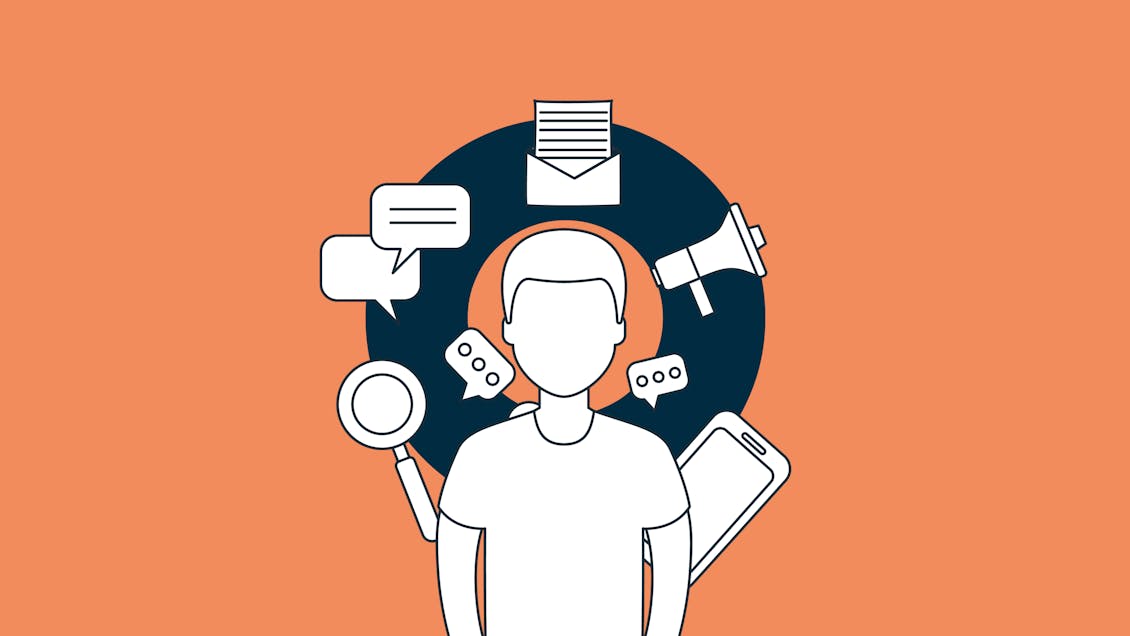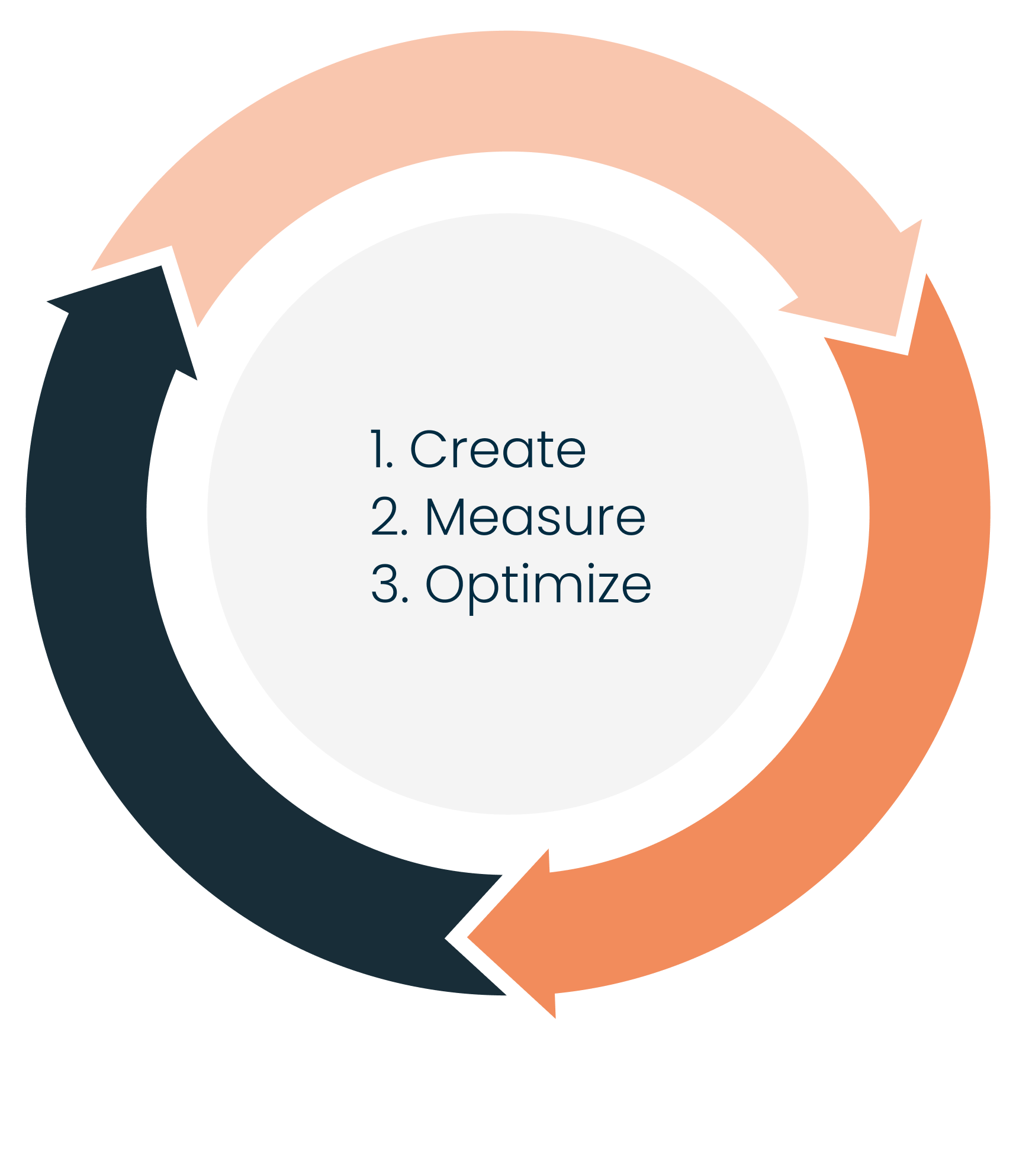How to build a human-centered digital marketing machine

Listen, learn, and adapt.
So you’re ready to market your new product or solution. You invest in ads on Google and Facebook. You’ve even got a “Buy Now” button on the ads that takes shoppers to your website where you wax poetic about how awesome your company is.
Except no one’s buying. Where did you go wrong? As hard as this may be to hear, people just don’t care about your product or service. They’re too focused on dealing with their own problems.
In today's business climate, brands need to implement human-centered digital marketing strategies to stand out from all the noise. It’s not enough to have a slick ad campaign. If your marketing doesn’t connect with your target audience when they need you, where they are looking for you, your efforts will fall flat.
How can you be sure that your marketing spend won’t go to waste? It starts with understanding who your users are and how they behave.

Know your customer
While it’s easy for brands to say they want to become more “customer obsessed,” putting that into action takes effort. Beyond developing customer personas and segments — which you absolutely should do to ensure your product, UX, sales, and strategy teams are aligned with marketing — customer profiles should be based on actual conversations with humans.
In addition to traffic analysis and feedback surveys, marketers must get in touch with their customers wherever they congregate online and in person. Interview customers and prospects about their challenges and goals to get the root of their needs and wants. Here are some sample questions:
- What are their “jobs-to-be-done” when making a purchasing decision? Those customer journey milestones should inform your messaging strategy.
- Where do they look (or listen) for information about their industry? Which online communities do they join for answers to their burning questions? Those are the publications and channels you should advertise with, and the online communities you should engage with.
- Which industry events are must-attend? Those are the conferences where you may want to invest in a booth or pursue a speaking opportunity.
Once you have these critical insights, you can build your marketing strategy to ensure you’re saying the right things and showing up in the right places, all with empathy and authenticity. You can take things a step further and use these conversations to inform emotional web design, which can turn your audience into brand evangelists.
Market to them better with first-party data
For years, marketers relied on cookie-based targeting and retargeting based on identity cues. As privacy concerns increase and third-party tracking is phased out to allow for safer, more compliant, and respectful collection of user data, businesses will need to adjust.
What is first-party data?
First-party data is information that a person shares with your business willingly and directly. Ideally, your business has a customer data platform (CDP) where this information is stored securely.
With first-party data collection, the visitor gets something in reward for handing over some of their personal data. Examples include product finder quizzes to help the consumer decide which product matches their needs, or a helpful guidebook in exchange for contact information. Of course, if the visitor becomes a customer and completes a transaction or submits shipping information, for example, that data can be used to establish loyalty status or create targeted advertising.
First-party data allows for relevant, personalized, human-centered marketing. Ultimately, it comes down to building relationships with the people who interact with your brand.

Focus on KPIs (but don't be afraid to change)
When you think of human-centered strategies, applying business KPIs (key performance indicators) may sound like a mismatch. Marketers will need to compromise the empathetic, human-centered approach with pragmatic business goal measurement — otherwise, all of your decisions will be based on gut feelings.
The key is having the right KPIs. They need to be tailored specifically to customer behavior, and there needs to be clear thinking about how they are going to be measured and tracked to understand their impact on business outcomes. It’s a mix of art and science that necessitates being nimble and willing to pivot.
Here’s one example of changing KPIs to better measure success. Initially, a company wanted to track people who downloaded their app in the app store. But after a few months, a few experiments, and a deep dive into the data, the marketing team realized that they needed to change their conversion KPI to users who registered in the app. Why? Because registered users served as a far better metric for success. Those users created significantly more value. They provided data that the team was able to use to create a much more accurate and detailed profile, based on customer intent, for further targeting.
KPIs are not one-size fits all. Companies need to walk before they can run; that means building up a large enough reservoir of statistically significant data to put back in the algorithm. Smart KPIs help companies better track their wins, and adjust the course when necessary.
Expand efficiently and intelligently
The KPIs have been established, the customer-informed campaigns dialed in, the testing ongoing. But companies can’t just 10x the marketing spend and expect to get 10x the results. It’s all about expanding with purpose and intelligence.
Think of it this way: a company has $100,000 to spend, but simply turning on the firehose and hoping for the best isn’t going to have regular and ongoing success. Marketers are better off having multiple hoses that are targeted and properly aimed to where their audience is. That kind of optimization—over the course of several months—is more effectively measured against KPIs.
Sometimes companies get lucky with their audience, but that’s not a way to build and win long term. Teams armed with customer-informed data, a willingness to listen, and the flexibility to change as needed will reach new heights, faster.

